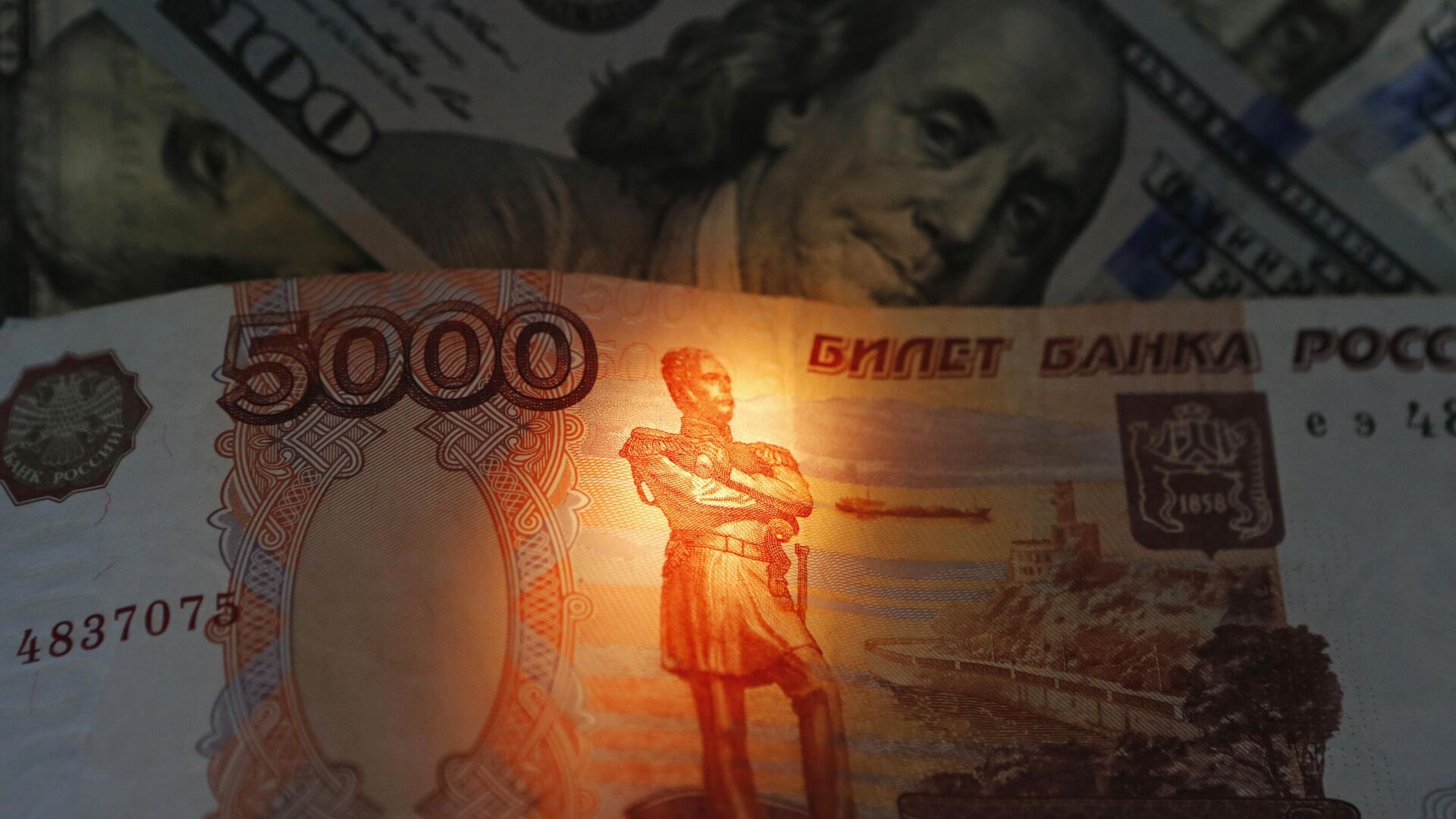Connecting Russia’s Digital Ruble to Others Will Create SWIFT, Dollar Alternatives

© Sputnik / Alexander Demianchuk
/ Subscribe
A business expert told Sputnik that great potential for creating a new global currency system not centered on the West lies at the heart of the growing movement toward central bank digital currencies (CBSCs), such as Russia’s digital ruble that launched on Tuesday.
A law creating a new digital ruble was recently approved by the Kremlin and has begun being rolled out. It is a third form of the Russian national currency, alongside printed bank notes and non-cash bank cards. Despite some superficial resemblances to a cryptocurrency, the digital ruble’s state backing gives it a stability and legitimacy that other highly unregulated digital currencies lack.
On August 1, bank-to-bank (B2B) transfers became the first part of the new currency format to be launched.
Paul Goncharoff, a management consultant at Dezan Shira & Associates in Moscow, told Sputnik that central bank digital currencies (CBSCs) have many of the advantages of other digital currencies but without many of their downsides.
Those include “fast transactions and lower transaction costs at a fee of 0.3%, with the benefit of being secured by the central bank. Unlike cryptocurrencies, the CBDC works entirely within the established financial system, which makes it systemic and government-friendly as opposed to possibly disruptive,” he explained.
“I see positives for businesses in using the Ruble CBDC, which may not be as true for P2P [person-to-person] transactions when they are started sometime between 2025 and 2027 due to inherent privacy issues. That being said, on a broad economic level, it should be a positive step in simplifying business transactions both inside and, eventually, outside of the Russian Federation,” Goncharoff noted.
He added that integrating Russia’s CBDC with those of other countries will further allow the Russian economy to circumvent the restrictions created by Western sanctions, which include the SWIFT wire transfer system that’s based in Brussels, a city also home to the European Union and the anti-Russian NATO alliance.
“While initially the ruble CBDC was intended for settlements within the Russian Federation and nearby countries to allow efficiencies in trade execution, it can be seen as Russia's litmus test for further expanding its CBDC use internationally,” the expert explained.
Goncharoff noted that other members of the BRICS bloc - namely India, China, Brazil, and South Africa - are actively developing CBDCs as well, so “it should not be too long before interoperability among BRICS member nations occurs. Such digital expressions of these currencies should boost international trade while providing an alternative outside the Western-dominated financial system centered around the US dollar and its restrictively sanctioned environment.”
“Russia's representative, when in New Delhi recently, proposed just such a unified digital currency for Russia, China, and India as a start. The initial goal is to enhance trade while complying with each country’s regulations and reducing reliance on the US dollar or euro to reduce the effects of real or anticipated international sanctions using those fiat currencies. On the BRICS agenda this August in South Africa are discussions on how members are developing CBDCs, and the expected advantages of digital currencies in international trade and financial arenas, and potential cross-pollination,” he explained.
Goncharoff noted that the US dollar would continue to dominate international trade for some time, but that trends such as the interconnectedness of new digital currencies would begin to dig the grave of old Western-centered systems like SWIFT.
“As President Putin once said ‘cutlets on one side, flies on the other’. CBDCs are digital representations of established currencies. At the current time, the US dollar reigns supreme for most global settlements. Until such time that BRICS, for example, combine their respective national CBDCs onto an agreed interoperative platform, CBDCs are unlikely to make a significant market changing dent in the US dollar's role in the short term unless the US dollar and the [US Federal Reserve] shoot themselves in the foot, or a ‘Black Swan’ event. That being said, the digitization of sovereign currencies, when it happens worldwide, will see that service providers such as SWIFT will eventually disappear in their present form, but that won't be for a while yet.”
“A US dollar CBDC will happen - it is a question of political time and is a hotly debated topic among a rather concerned public. Many are opposed, as they see that the use of CBDCs does reduce information privacy, especially concerning who, what, where, and for how much did a company or a person make a transaction? Essentially, the same data is collected by issuers every time anyone uses a credit or debit card. The difference is that this will be centralized information with the Fed. That being said, it will occur, it is a matter of time, and after going through all the bells and whistles of legislation.”





